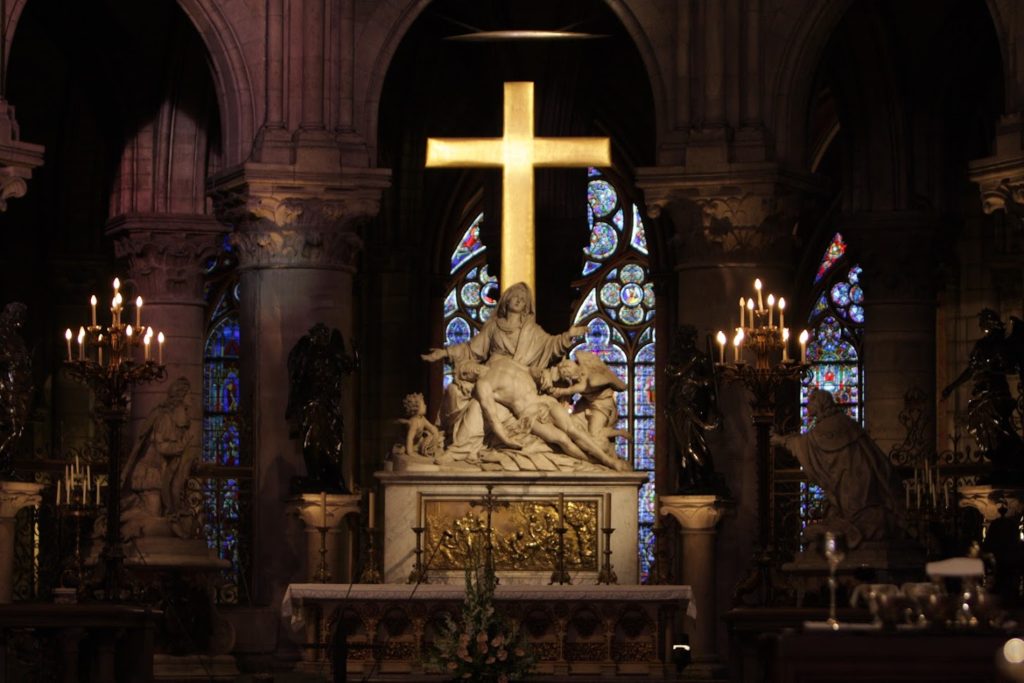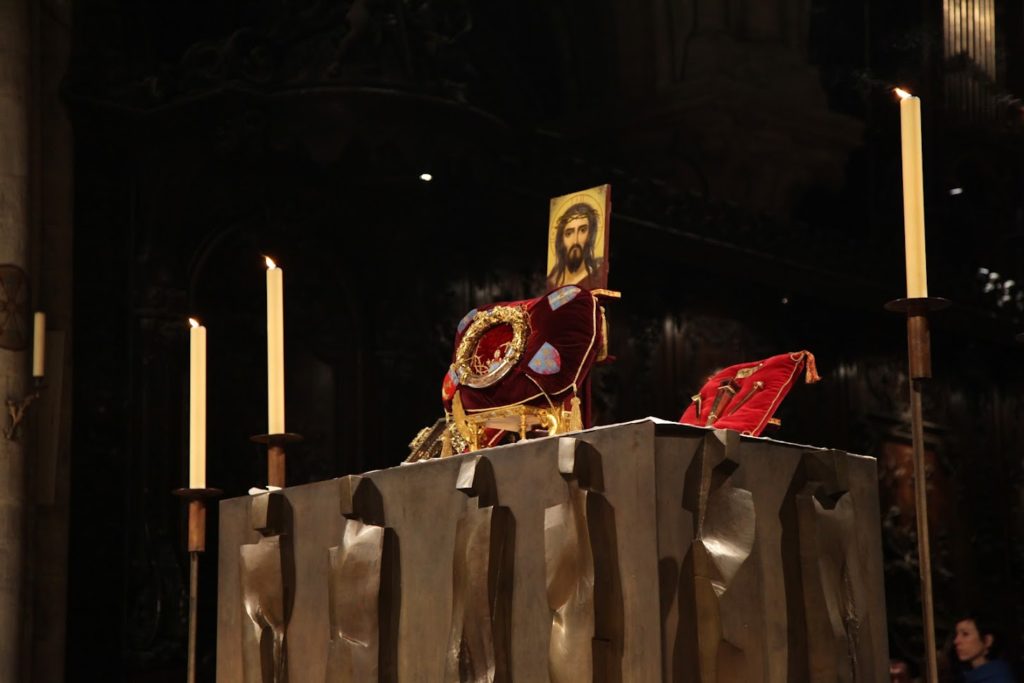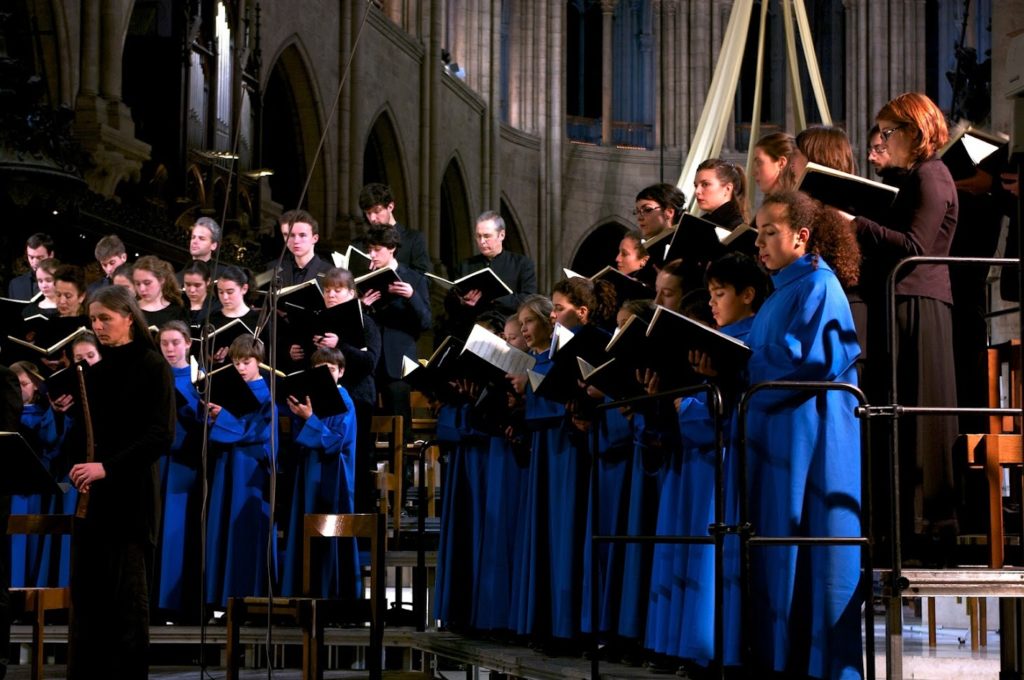A Christian monument

Besides being a heritage treasure, Notre-Dame Cathedral embodies what men can achieve when, driven by their desire to join transcendance, they unite their strength and intelligence to carry out a common work. The current project must continue this story and make intelligible, for our century, the faith that led to the building of this masterpiece. Open to all, according to the right understanding of the word Catholic, the cathedral has been, and will remain, constant in its purpose for eight centuries: the celebration of the Christian mystery.

These words, spoken during the feast of the Dedication of Notre-Dame de Paris, recall the dual nature of the cathedral, first as a historical monument, embodying a certain conception of French heritage; then as a religious centre, Notre-Dame having always been a special place of Western Christianity. Until 2019, in addition to tourists, the building welcomed millions of pilgrims from all over the world. The faithful would gather in front of the altar of Mary, facing the statue whose features personify the cathedral, while referring it to the eternal image of the Virgin. When the liturgical calendar permitted, they also came to venerate the Holy Crown of Christ which, along with the Turin Shroud, is one of the most important relics of the Church.

The life of a church
Notre-Dame is at the heart of the liturgical life of the Diocese of Paris: it houses the archbishop’s cathedra, where he sits during major celebrations. Prior to its construction, there was already a Romanesque-style cathedral dedicated to Saint Étienne on the Ile de la Cité. Witness to the beginnings of Christian worship, initiated in France by Clovis, it was demolished in the 12th century to allow the construction of a larger building, using new architectural techniques and reflecting the evolution of sacred art towards Gothic. So this Parisian location has always been a place of worship, dedicated to the activities of the Diocese. The arrival of the relics of the Passion in 1239 extended the cathedral’s influence, which had become a major sanctuary in the Christian world.

On 27 February 1805, Notre-Dame was elevated to a basilica by Pope Pius VII. It is today one of the five minor basilicas of Paris with the basilicas of Saint Clothilde (75007), Notre-Dame des Victoires (75002), Notre-Dame du Perpétuel Secours, and the basilica of Sacré-Cœur in Montmartre (75018). Before the fire, five services were celebrated there from Monday to Saturday, with seven on Sunday. If we count the special feasts and masses, more than 2000 celebrations brought the cathedral to life each year.
Faithful accompanists of these services, the choristers of the Sacred Music Association sang to the sound of the organs, under vaults laden with prayers and history.

Catholicism at Notre-Dame
A fully Catholic cathedral, therefore by definition open to all : what exactly does this idea mean? Christianity is a religion of universality; Catholicism, for its part, is the institution of this universality in the body of the Church, both a world assembly, supported by the Pope and his representatives, and an edifice intended to unite this assembly, to found it as a local community. At the base of any church – like any cathedral – lies an aesthetic of openness, a certain ideal of welcome that’s addressed, not just to believers, but to all of humanity. Victor Hugo, in his famous novel, didn’t forget this: Notre-Dame is an asylum, that is to say, etymologically, an inviolable refuge where you can find protection. It’s within this refuge, sacred among all since it is the house of the Lord, that the individual is initiated into the Christian Mystery. Because the cathedral is also thought of as a discourse, an implicit pedagogy where the soul is the pupil of the iconic images that punctuate its journey, like a vast grammar. It’s not easy, however, to grasp the subtleties of the Catholic dogma, nor the symbolic meaning of travel around the building; so the programme of interior arrangements of Notre-Dame plans to guide the visitor, as clearly as possible, during their journey.
Check out the new liturgical path of Notre-Dame
© Photos Dumoux, Yannick Boschat